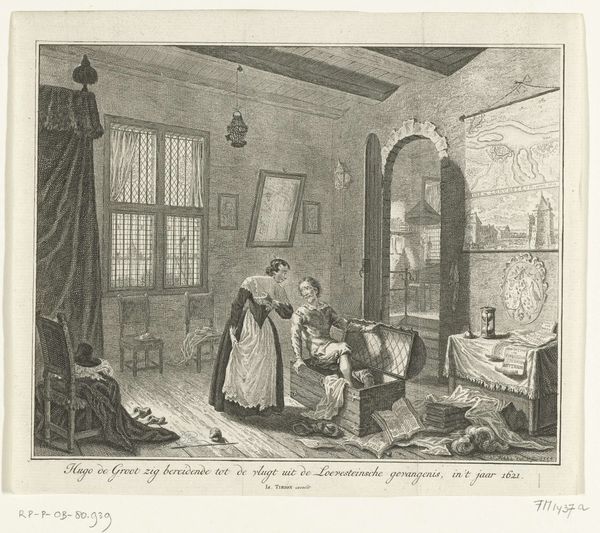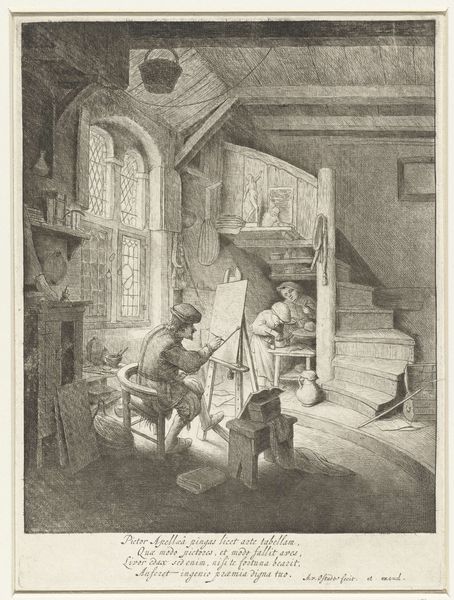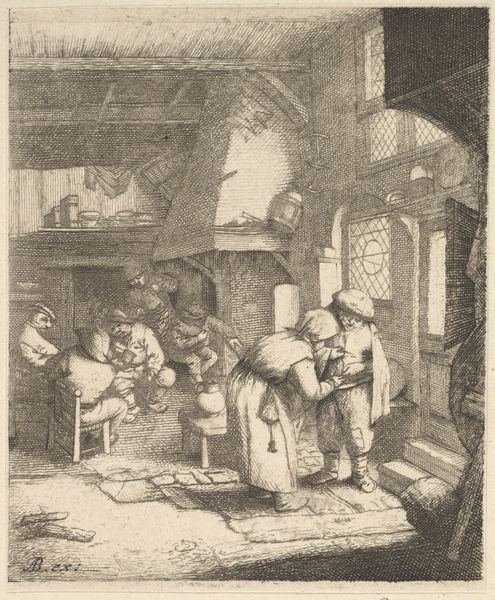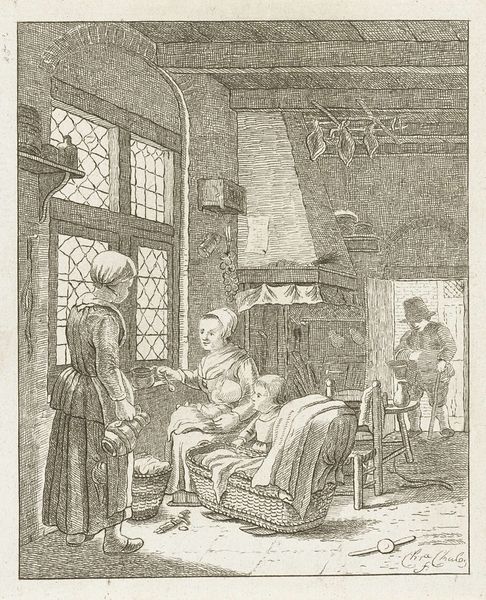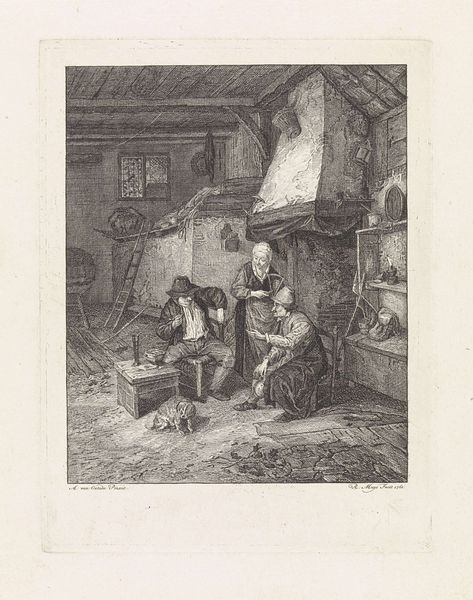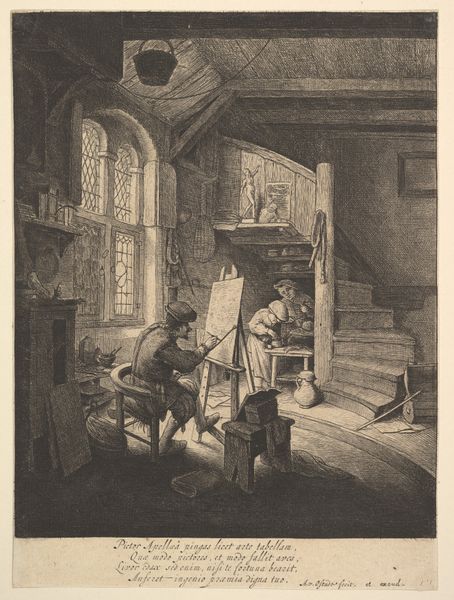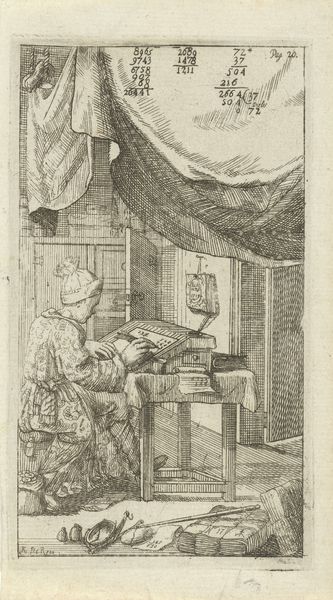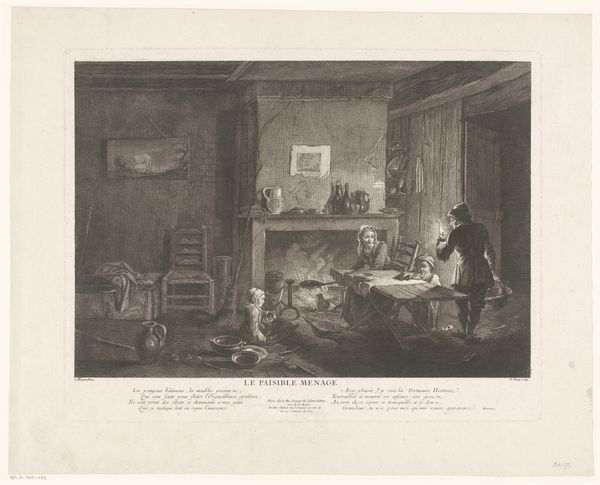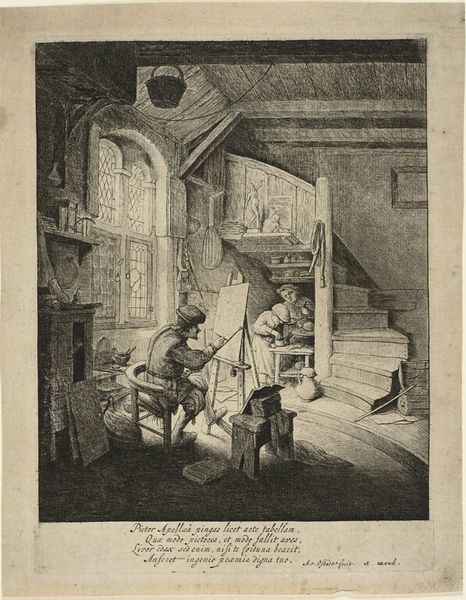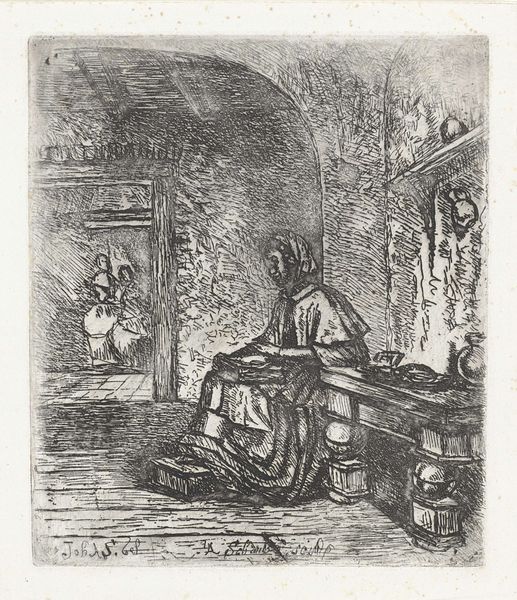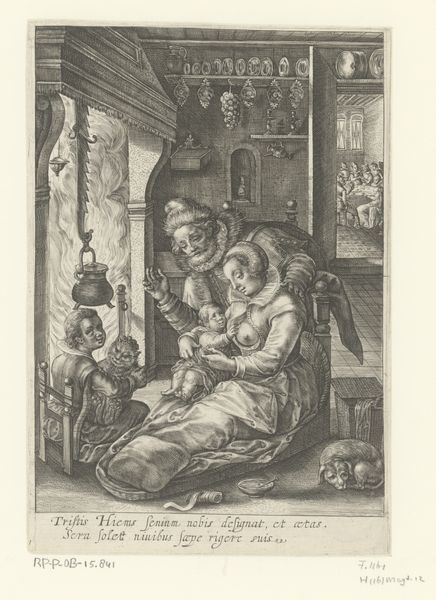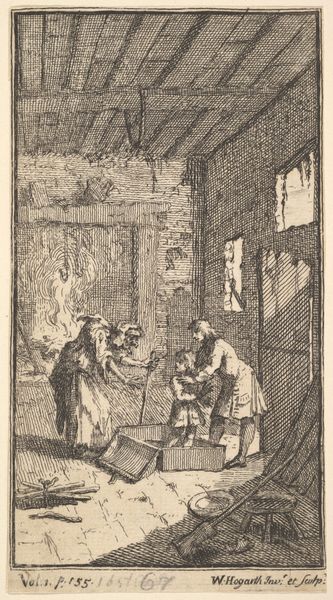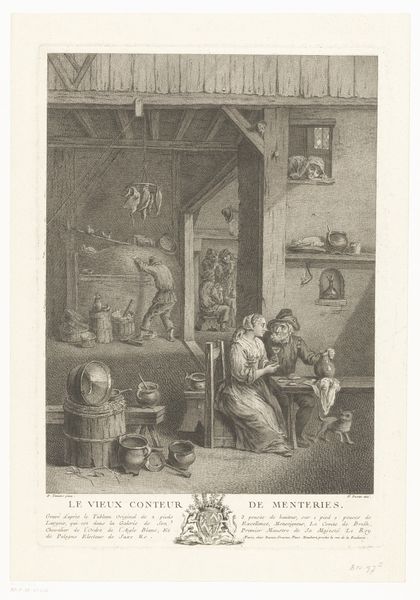
print, engraving
#
narrative-art
#
baroque
# print
#
figuration
#
genre-painting
#
engraving
Dimensions: height 357 mm, width 282 mm
Copyright: Rijks Museum: Open Domain
Curator: Looking at this, I'm struck by the density of detail, the almost overwhelming accumulation of objects within the scene. Editor: Yes, this engraving by Cornelis-Henricus van Meurs, created around 1720 to 1730, titled "Kitchen interior with a woman and a boy," truly gives us a peek into the material world of the time. There’s a real tension between the mundane and the… well, the quite captivating mood. Curator: That mood… for me, it’s one of quiet domesticity, but also, something a little unsettling. Notice the lighting, the shadows… they almost seem to swallow the figures. It lends a feeling of melancholy to what should be a simple scene of a kitchen interior. Then the imagery; there's the spinning wheel, which we'll see represents not just the domestic, but a traditional virtue as well as perhaps even fate or time, being relentlessly wound. Editor: Absolutely, the etching itself being an example of highly skilled labor speaks volumes. The sharp precision used for engraving renders the textures—metal pots, wooden structures—in great depth and highlights class and work ethic with a moralistic eye. Consider the production itself, engraving and printing were laborious crafts demanding significant skill and equipment, and access to markets to circulate and monetize. Curator: I agree. Beyond just documenting, the objects tell a narrative; we know those lanterns hold not only light but are probably a sign of trade with Asia; even the architectural framing has symbolism – like a proscenium arch separating spectator from stage, making you see more than is physically there. Editor: Good eye! The social hierarchy suggested is so carefully woven, right down to how meticulously it's crafted. The rat or mouse lurking on the floor speaks to the everyday fight between productivity, hygiene, consumption and nature itself. It’s about work and domestic economy. The materiality hints towards cultural narratives around family, domestic order, or societal virtue in contrast with less acceptable societal behaviour Curator: And to add, I sense even that inscription below hints to a message for how society should view certain roles played in this home. A bit on how to judge house affairs to an appropriate degree... it really calls for us to view the piece with historical insight to what society valued at the time. Editor: Indeed. By dissecting the materials and analyzing the objects depicted, one gains such a greater appreciation of how deeply embedded labor, value, and class are represented here, whilst you illuminate with its social narrative. Curator: Looking again, what resonates with me is how Van Meurs captures these intimate, seemingly uneventful moments and invests them with layers of meaning and significance. It shows us something about everyday people which persists across eras.
Comments
No comments
Be the first to comment and join the conversation on the ultimate creative platform.
